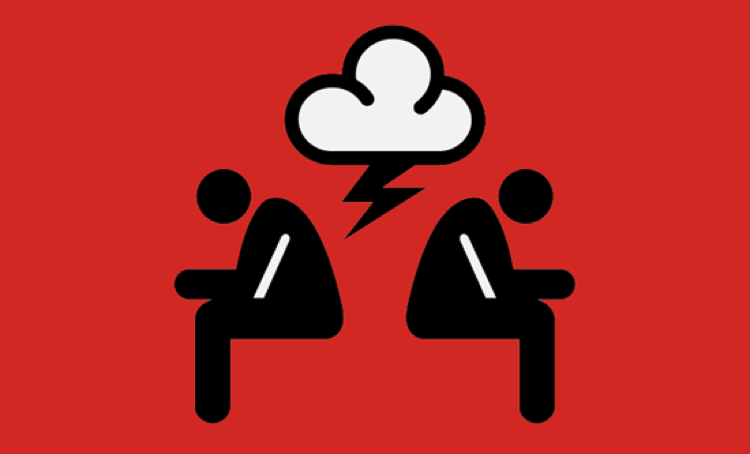Breathing is the most basic essentiality that we need to be alive but at times due to outside sources or internal reasons even that can become a struggle. One such situation arises in the case of thunderstorm asthma which is a weather-based condition that can turn wind and pollen into a dangerous combination.
A person is told to have asthma when the person’s airways become inflamed, narrow, swollen and produce extra mucus, leading to a struggle while breathing. Asthma is known to affect a person’s bronchial tubes, where the air goes in and out of the lungs. When a person gets an asthma attack, bronchial tubes narrow and that creates difficulty in breathing. A mild asthma attack can last just a few minutes, but stronger ones can go on for hours or even days and require serious medical intervention.

Important Announcement – EasyShiksha has now started Online Internship Program “Ab India Sikhega Ghar Se”

Top Courses in Virtual Reality
HOW DOES IT HAPPEN?
While thunderstorm asthma occurs when heavy storms happen on a day when the pollen count is very high and triggers the symptoms of an asthma attack. Pollen grains get absorbed in the storm clouds. Once these grains suck in a certain amount of water, they pop, forming even smaller grains which then get into the wind at ground level and can easily be breathed, in leading to asthma attacks.
WHO IS MORE AT RISK?
People who already have asthma and/or hay fever (allergy leading to itchy, watery eyes, sneezing and other similar symptoms) need to be extra careful to avoid thunderstorm asthma attacks.
Top Courses in Software Engineering
More Courses With Certification
They must stay informed and be prepared in consultation with their doctors like they could use their preventer medicine every day and keep a reliever inhaler (blue puffer) ready with them at all times. Thunderstorm asthma often hits adults who are already affected by asthma or are allergic to grass pollen. But it can cause problems for people even without these pre-existing conditions.
Top Courses in Quality Management System
More Courses With Certification
Top Courses in Project Management
More Courses With Certification
People who wheeze and sneeze with hay fever from pollen during spring are more likely to get thunderstorm asthma even if they haven’t had asthma before.
Thunderstorm asthma can occur suddenly in people, mostly during spring or summer when the pollen quantity in the air is very high and the weather is hot, dry, windy and stormy.

Top Courses in Personal Development
 Forgiveness Is Freedom – Let Go And Feel Amazing!
Forgiveness Is Freedom – Let Go And Feel Amazing!More Courses With Certification
Top Courses in Networking
This is so because as explained earlier the thunderstorm weather in spring can make pollen grains burst into tiny pieces that are further blown around us by the wind. When people end up breathing these tiny pieces of pollen they can penetrate deep inside the lungs and trigger an asthma attack.
SIGNS TO LOOK OUT FOR
The signs and symptoms of thunderstorm asthma attacks are generally similar to those of a typical asthma attack like:
· Shortness of breath or breathlessness
· Rapid breathing
· Tightness of the chest
· Persistent coughing and wheezing (a whistling sound from the chest while breathing)
Certain asthma symptoms vary individually in different persons and should be kept under check. Some other signs that can be observed include:
The skin surrounding the breastbone or ribs gets sucked in while breathing
Face, lips, or fingernails turn very pale or blue
The chest doesn’t relax while breathing out
TREATMENT
People who are already suffering from asthma and get a mild attack should continue with their regular action plan with an inhaler (take two to six puffs of a quick-acting inhaler or a rescue inhaler) to help with opening the airways. In case of a severe attack, if the person is too short of breath to even speak, then he/she should take two to six puffs of a quick-acting medication, and get medical help soon after.
Some times when the person is having an attack and does not have a rescue inhaler or medication along, he/she must reach out for medical assistance at the earliest. The doctor will most likely provide the medicine through an inhaler or a nebulizer to ease breathing. Steroid pills can also be given to ease inflammation in the lungs. In severe cases, doctors can recommend an oxygen machine.
PREVENTION
Pollen counts or thunderstorms are not really under anyone’s control but how they affect you can still be managed. Foremost, it is essential to stay aware of your condition and be prepared to control it if the situation arises. This is especially for those who have asthma or hay fever or are allergic to grass, pollen and/or extreme weather. Some of the steps that can be followed to maintain your safety and avoid an attack include:
Take necessary precautionary medicines in consultation with your doctor during seasonal changes
Stay prepared. Keep a nasal spray or an inhaler with you depending on your condition
Keep an eye on the weather
Try to stay inside a building or car with the windows shut and the air conditioner switched to recirculate/recycled just before and during storms with wind gusts.
Contributed by Dr Hirenappa Udnur, Consultant – Pulmonology, Columbia Asia Hospital Hebbal
Empower your team. Lead the industry
Get a subscription to a library of online courses and digital learning tools for your organization with EasyShiksha
Request NowALSO READ: iimb hosts fifth international conference on law and economics
Get Course: The complete legal english online course











































































































































































